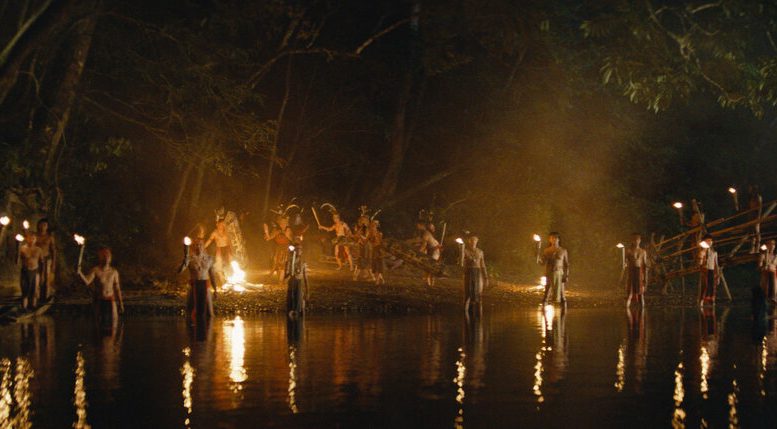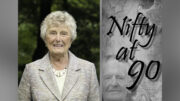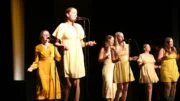The Associated Press
If the new adventure film “ Edge of the World,” about a British explorer and soldier in 1840s Borneo, seems suspiciously like “The Man Who Would Be King” and “Lord Jim,” it’s for good reason. It was the inspiration for both. Both Rudyard Kipling and Joseph Conrad were moved by the true story of James Brooke, a former soldier in the Bengal Army who would become the Raj of Sarawak at the height of the British Empire. Brooke’s family ended up governing there for a century.
Brooke’s story may have provided the foundation for a lot, but the other novels and films came first and became classics in the process — not to mention everything they then informed and inspired. It’s not that Hollywood hasn’t tried to give Brooke his due. Even Errol Flynn was supposed to play him at one point.
On one level, it’s impossible for “Edge of the World” not to feel like an homage. At the same time, director Michael Haussman (a prolific music video director) and screenwriter and producer Rob Allyn (for whom this has been a passion project) make the smart choice to simply lean into the canon instead of trying to forge a new path. It’s not just story beats that feel familiar, but visual cues as well. Terrence Malick’s “The New World” may have been the filmmakers’ most cited touchstone.
The always intense Jonathan Rhys Meyers stars as Brooke, a wanderer by nature who has never felt at home in Victorian England. Born in India and once a soldier, he’s seen enough to know what he’s not looking for and thus takes his inheritance and funds wild missions with his pals. He’s also decidedly more modern than many of his peers in terms of how he views colonialism and is fascinated by other cultures, not as conquests for an empire, but on their own terms. Even so, he shares some views with his countrymen about “civilizing” the more “savage” aspects of some of the native people he encounters.
Brooke is immediately smitten with Borneo when he arrives on a private expedition with a few countrymen, Colonel Arthur Crookshank (Dominic Monaghan) and Charlie (Otto Farant). There they meet two princes, the cosmopolitan Badruddin (Samo Rafael) and Mahkota (Bront Palarae), who are friendly but have decidedly different views on governance, punishment, and rewards (Mahkota favors beheading). After Brooke helps the locals squash a rebellion, the Sultan of Brunei makes him Rajah of Sarawak and he quickly starts an intense romance with the beautiful Fatima (Atiqah Hasiholan). As the leader, he attempts to meld his ideas of civilization with the customs of the people he’s now responsible for. He dreams of a world without piracy, slavery, and head-hunting. Many are eager to follow him.
But anyone who has even the most passing familiarity with “Heart of Darkness,” or “Apocalypse Now,” will know that the honeymoon is soon to end. The threat of Mahkota still looms and there are even some attempts to get the British Navy to lend a steamship to go upriver and conquer the enemy. That also turns into its own battle over sovereignty and imperialism.
Brooke narrates much of this journey through dreamy, poetic voiceovers, which even when successful can be an acquired taste. He’s a bit of an inscrutable character, hard to embrace but also not necessarily one you’re rooting against. In other words, Meyers is perfectly cast.
This is a film that is striving to be a classic swashbuckler, a lyrical mediation on exploration and identity, and a knowingly modern commentary on a deplorable but significant era in world history. Not unlike Brooke’s, the ambitions were admirably grand. While it might not knock it out of the park, “Edge of the World” is still a very solid watch if a little slow-going and might also just inspire you to revisit some of the classics it’s indebted to which is its own small triumph.
“Edge of the World,” a Samuel Goldwyn Films release on digital and video on demand Friday, has not been rated by the Motion Picture Association of America, but contains violent and disturbing imagery. Running time: 104 minutes. Two and a half stars out of four.








































